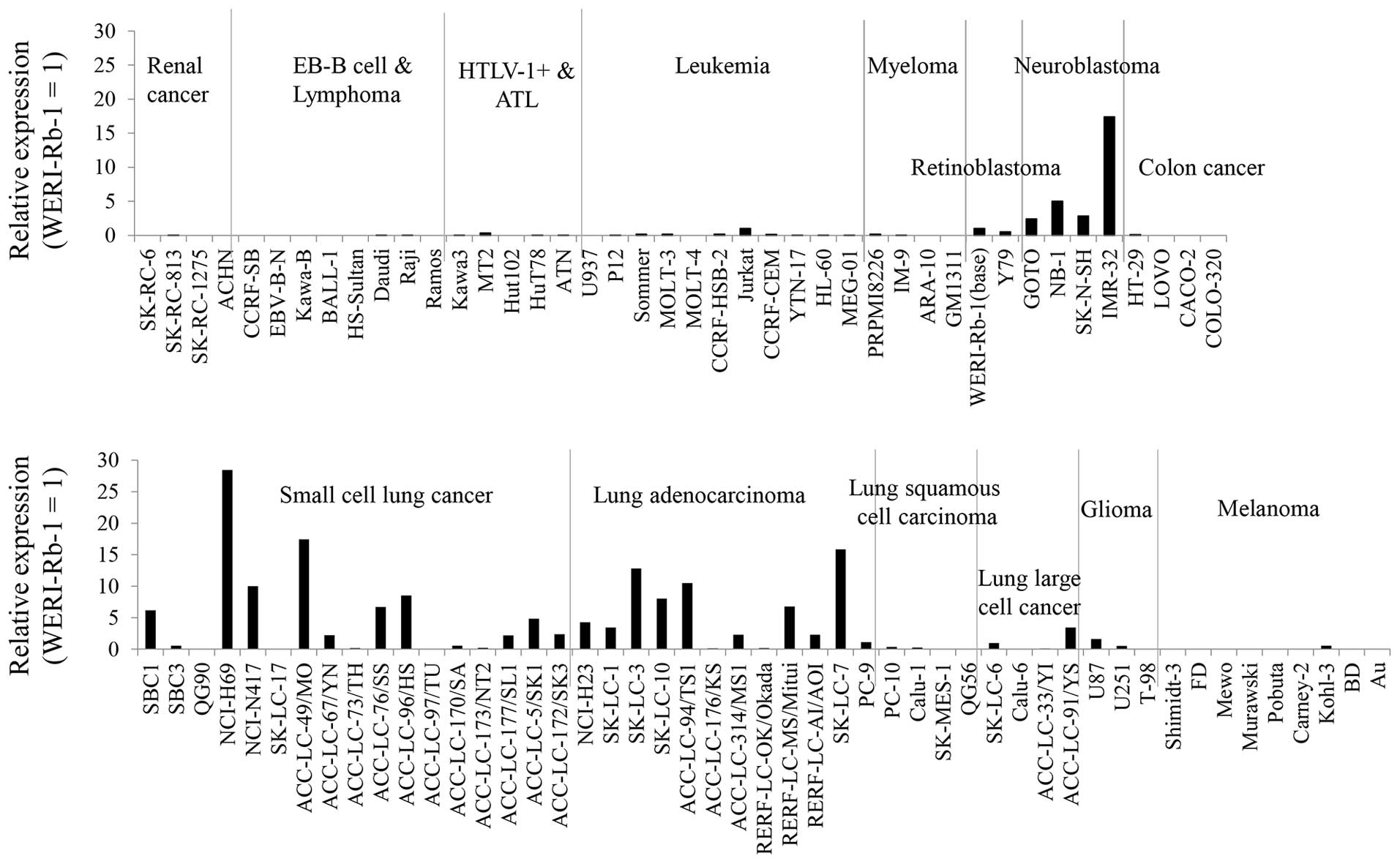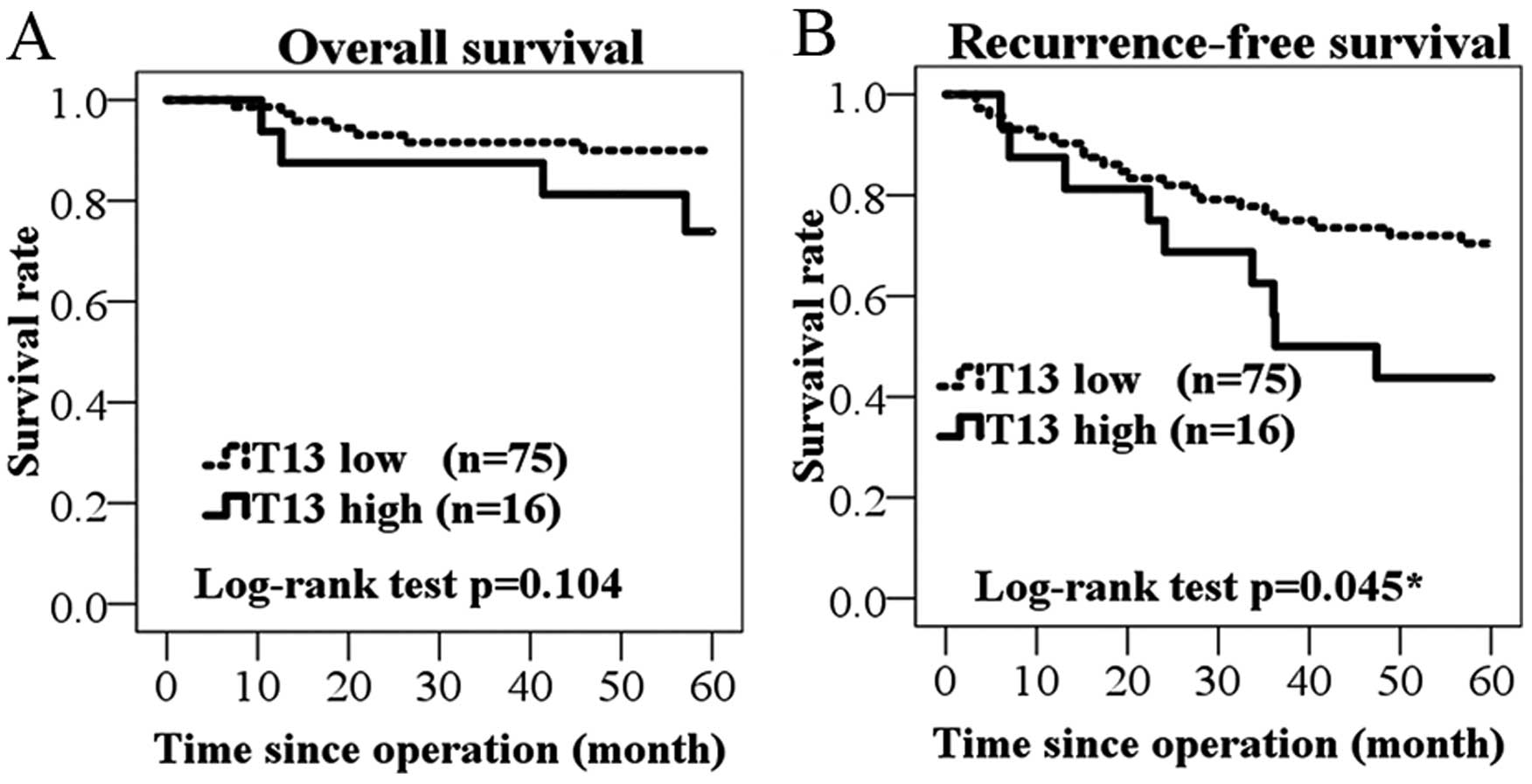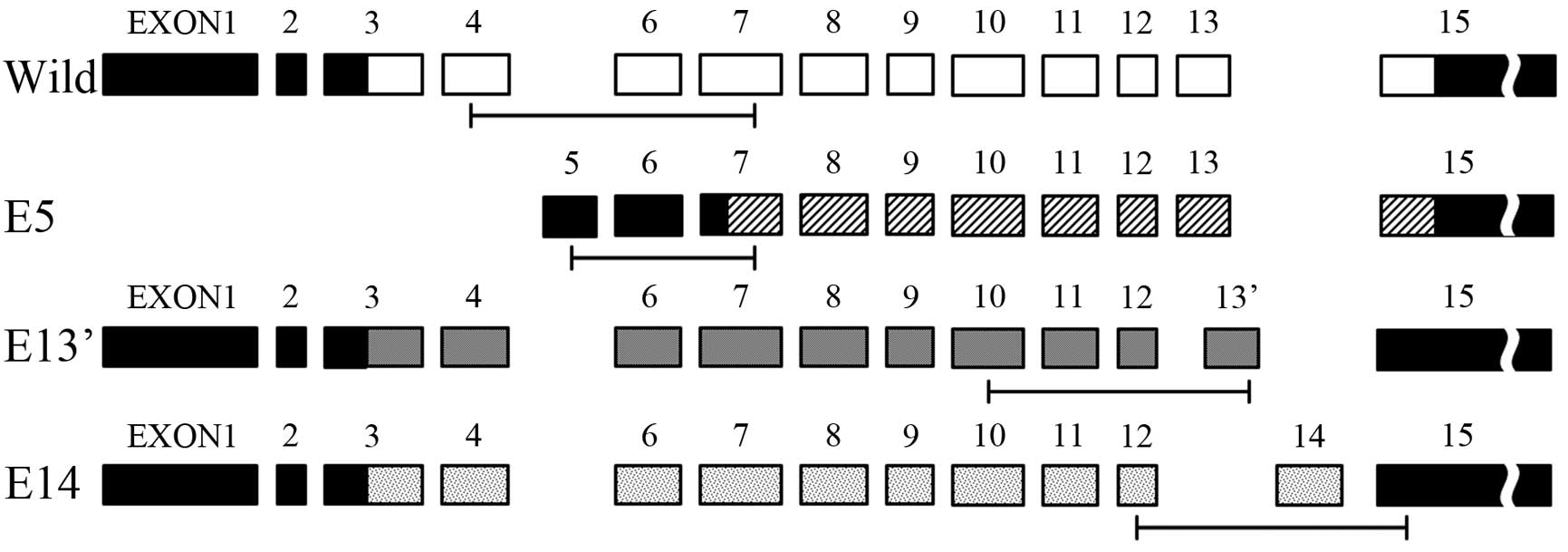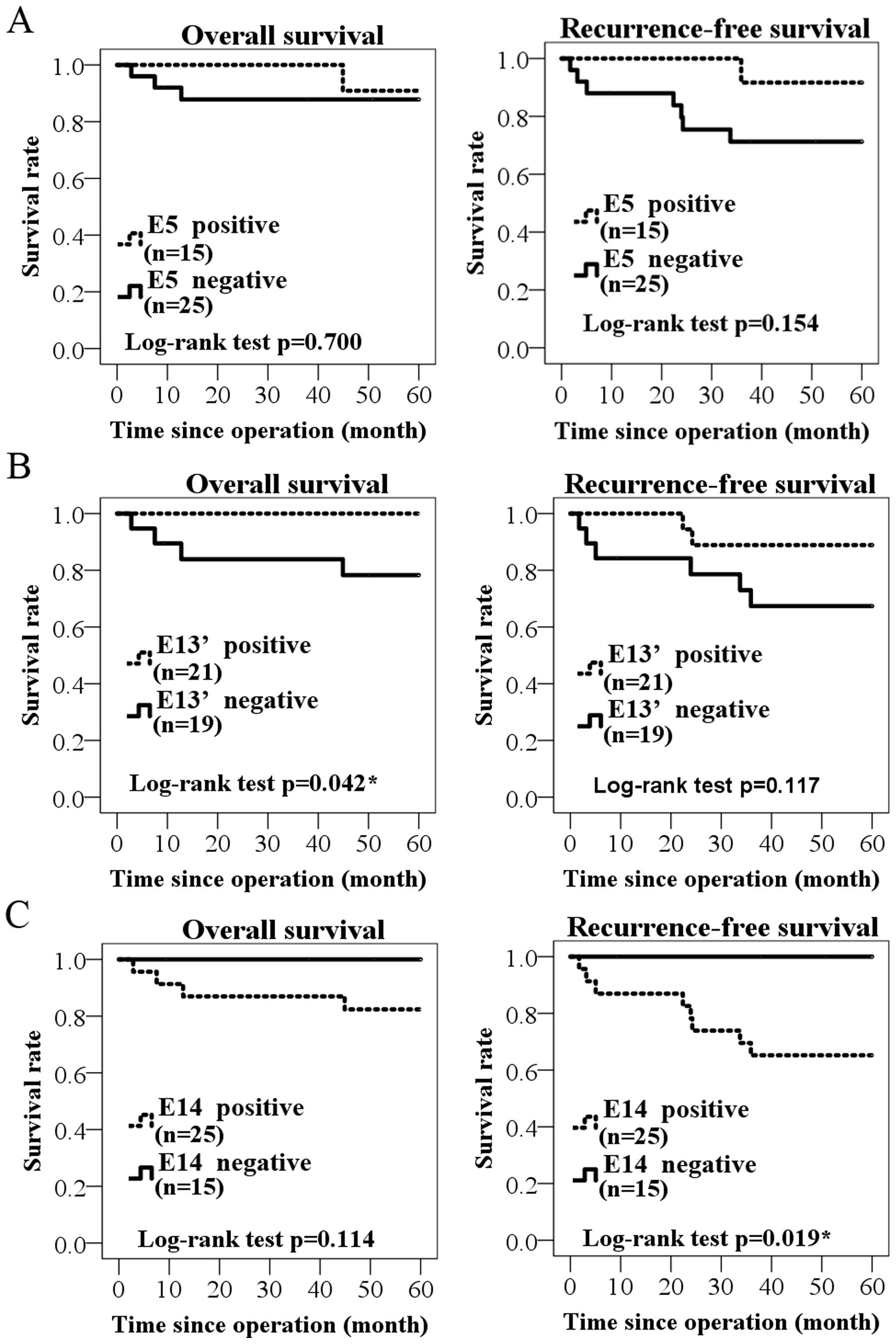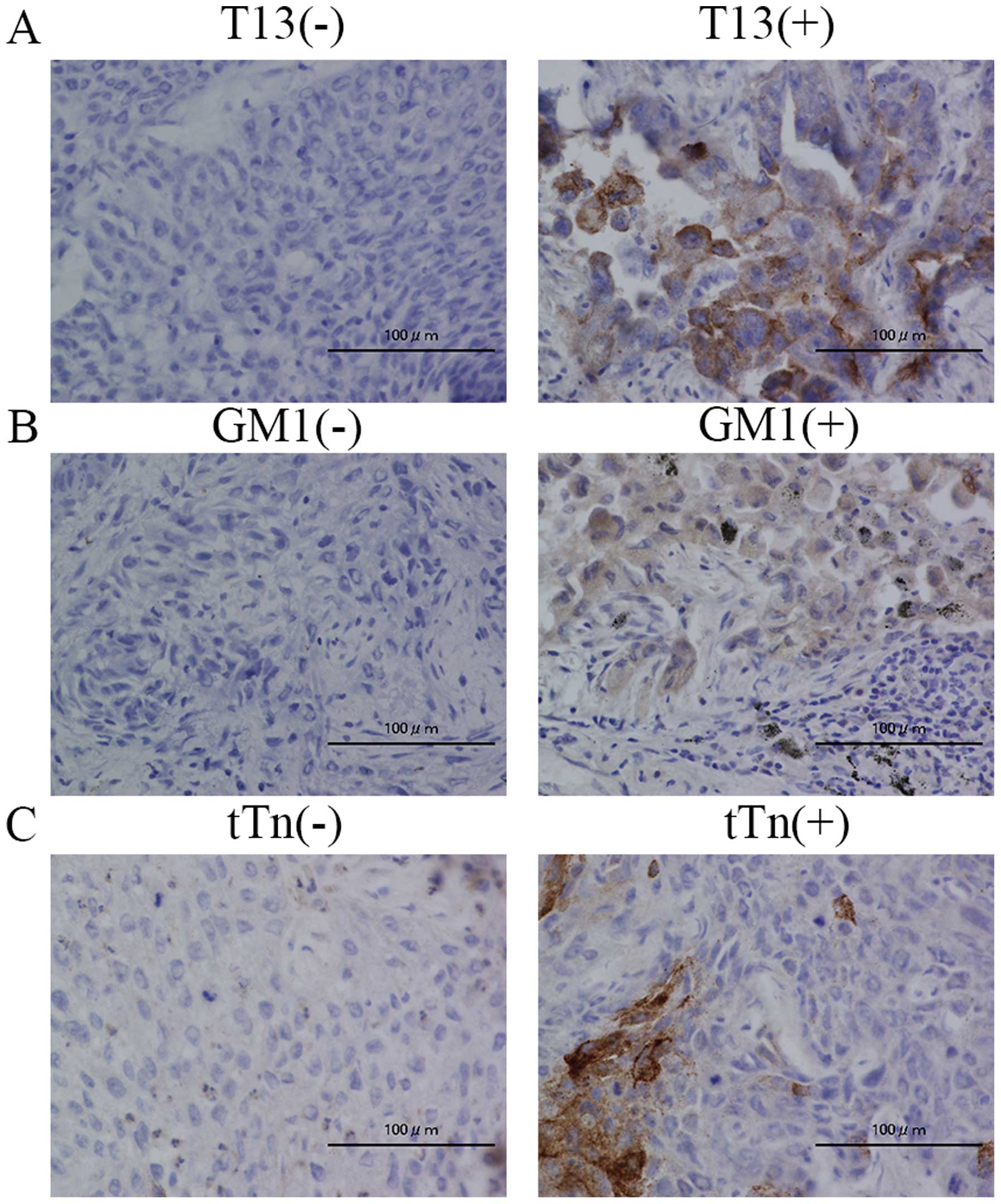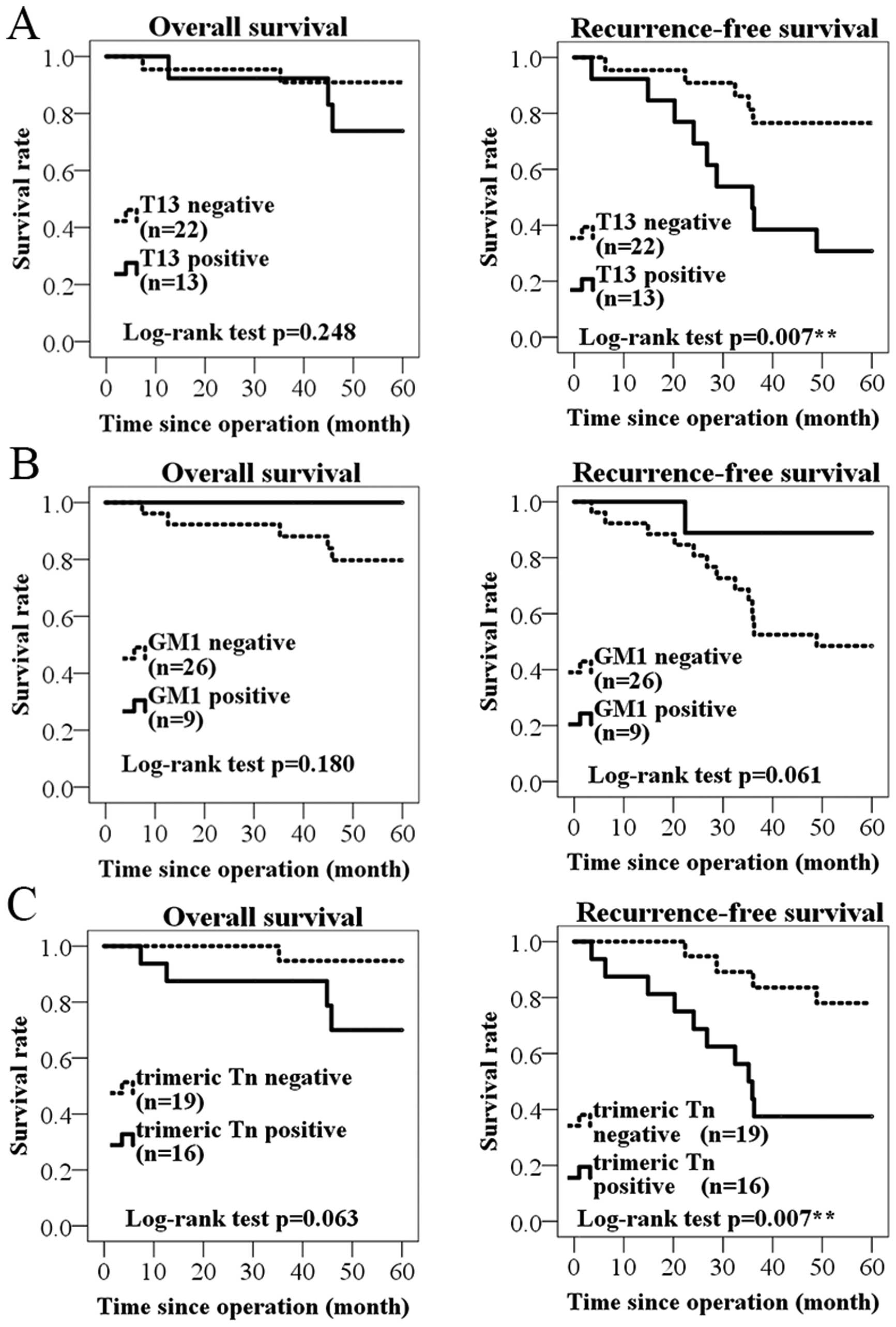|
1
|
Siegel RL, Miller KD and Jemal A: Cancer
statistics, 2015. CA Cancer J Clin. 65:5–29. 2015. View Article : Google Scholar : PubMed/NCBI
|
|
2
|
Rosell R, Moran T, Queralt C, Porta R,
Cardenal F, Camps C, Majem M, Lopez-Vivanco G, Isla D, Provencio M,
et al: Spanish Lung Cancer Group: Screening for epidermal growth
factor receptor mutations in lung cancer. N Engl J Med.
361:958–967. 2009. View Article : Google Scholar : PubMed/NCBI
|
|
3
|
Solomon B, Varella-Garcia M and Camidge
DR: ALK gene rearrangements: A new therapeutic target in a
molecularly defined subset of non-small cell lung cancer. J Thorac
Oncol. 4:1450–1454. 2009. View Article : Google Scholar : PubMed/NCBI
|
|
4
|
Hakomori S: Cancer-associated
glycosphingolipid antigens: Their structure, organization, and
function. Acta Anat (Basel). 161:79–90. 1998. View Article : Google Scholar
|
|
5
|
Kasahara K and Sanai Y: Possible roles of
glycosphingolipids in lipid rafts. Biophys Chem. 82:121–127. 1999.
View Article : Google Scholar
|
|
6
|
Fuster MM and Esko JD: The sweet and sour
of cancer: Glycans as novel therapeutic targets. Nat Rev Cancer.
5:526–542. 2005. View
Article : Google Scholar : PubMed/NCBI
|
|
7
|
Li M, Song L and Qin X: Glycan changes:
Cancer metastasis and anti-cancer vaccines. J Biosci. 35:665–673.
2010. View Article : Google Scholar
|
|
8
|
Wiegandt H: Gangliosides. Glycolipids. 10.
Wiegandt H: Elsevier Science Publishers; Amsterdam: pp. 199–260.
1985, View Article : Google Scholar
|
|
9
|
Cheresh DA, Rosenberg J, Mujoo K,
Hirschowitz L and Reisfeld RA: Biosynthesis and expression of the
disialoganglioside GD2, a relevant target antigen on small cell
lung carcinoma for monoclonal antibody-mediated cytolysis. Cancer
Res. 46:5112–5118. 1986.PubMed/NCBI
|
|
10
|
Yoshida S, Fukumoto S, Kawaguchi H, Sato
S, Ueda R and Furukawa K: Ganglioside GD2 in small cell
lung cancer cell lines: Enhancement of cell proliferation and
mediation of apoptosis. Cancer Res. 61:4244–4252. 2001.PubMed/NCBI
|
|
11
|
Yoshida S, Kawaguchi H, Sato S, Ueda R and
Furukawa K: An anti-GD2 monoclonal antibody enhances apoptotic
effects of anti-cancer drugs against small cell lung cancer cells
via JNK (c-Jun terminal kinase) activation. Jpn J Cancer Res.
93:816–824. 2002. View Article : Google Scholar : PubMed/NCBI
|
|
12
|
Alfonso S, Valdés-Zayas A, Santiesteban
ER, Flores YI, Areces F, Hernández M, Viada CE, Mendoza IC, Guerra
PP, García E, et al: A randomized, multicenter, placebo-controlled
clinical trial of racotumomab-alum vaccine as switch maintenance
therapy in advanced non-small cell lung cancer patients. Clin
Cancer Res. 20:3660–3671. 2014. View Article : Google Scholar : PubMed/NCBI
|
|
13
|
Kannagi R: Molecular mechanism for
cancer-associated induction of sialyl Lewis X and sialyl Lewis A
expression-The Warburg effect revisited. Glycoconj J. 20:353–364.
2004. View Article : Google Scholar : PubMed/NCBI
|
|
14
|
Brockhausen I: Mucin-type O-glycans in
human colon and breast cancer: Glycodynamics and functions. EMBO
Rep. 7:599–604. 2006. View Article : Google Scholar : PubMed/NCBI
|
|
15
|
Cao Y, Stosiek P, Springer GF and Karsten
U: Thomsen-Friedenreich-related carbohydrate antigens in normal
adult human tissues: A systematic and comparative study. Histochem
Cell Biol. 106:197–207. 1996. View Article : Google Scholar : PubMed/NCBI
|
|
16
|
Ju T, Otto VI and Cummings RD: The Tn
antigen-structural simplicity and biological complexity. Angew Chem
Int Ed Engl. 50:1770–1791. 2011. View Article : Google Scholar : PubMed/NCBI
|
|
17
|
Zhang Q and Furukawa K, Chen HH,
Sakakibara T, Urano T and Furukawa K: Metastatic potential of mouse
Lewis lung cancer cells is regulated via ganglioside GM1 by
modulating the matrix metalloprotease-9 localization in lipid
rafts. J Biol Chem. 281:18145–18155. 2006. View Article : Google Scholar : PubMed/NCBI
|
|
18
|
Zhang Y, Iwasaki H, Wang H, Kudo T, Kalka
TB, Hennet T, Kubota T, Cheng L, Inaba N, Gotoh M, et al: Cloning
and characterization of a new human
UDP-N-acetyl-α-D-galactosamine:polypeptide
N-acetylgalactosaminyltransferase, designated pp-GalNAc-T13, that
is specifically expressed in neurons and synthesizes GalNAc
α-serine/threonine antigen. J Biol Chem. 278:573–584. 2003.
View Article : Google Scholar
|
|
19
|
Matsumoto Y, Zhang Q, Akita K, Nakada H,
Hamamura K, Tokuda N, Tsuchida A, Matsubara T, Hori T, Okajima T,
et al: pp-GalNAc-T13 induces high metastatic potential of murine
Lewis lung cancer by generating trimeric Tn antigen. Biochem
Biophys Res Commun. 419:7–13. 2012. View Article : Google Scholar : PubMed/NCBI
|
|
20
|
Matsumoto Y, Zhang Q, Akita K, Nakada H,
Hamamura K, Tsuchida A, Okajima T and Furukawa K, Urano T and
Furukawa K: Trimeric Tn antigen on syndecan 1 produced by
ppGalNAc-T13 enhances cancer metastasis via a complex formation
with integrin α5β1 and matrix metalloproteinase 9. J Biol Chem.
288:24264–24276. 2013. View Article : Google Scholar : PubMed/NCBI
|
|
21
|
Berois N, Blanc E, Ripoche H, Mergui X,
Trajtenberg F, Cantais S, Barrois M, Dessen P, Kågedal B, Bénard J,
et al: ppGalNAc-T13: A new molecular marker of bone marrow
involvement in neuroblastoma. Clin Chem. 52:1701–1712. 2006.
View Article : Google Scholar : PubMed/NCBI
|
|
22
|
Naruke T, Suemasu K and Ishikawa S: Lymph
node mapping and curability at various levels of metastasis in
resected lung cancer. J Thorac Cardiovasc Surg. 76:832–839.
1978.PubMed/NCBI
|
|
23
|
Morita N, Yajima Y, Asanuma H, Nakada H
and Fujita-Yamaguchi Y: Inhibition of cancer cell growth by anti-Tn
monoclonal antibody MLS128. Biosci Trends. 3:32–37. 2009.
|
|
24
|
Zamri N, Masuda N, Oura F, Yajima Y,
Nakada H and Fujita-Yamaguchi Y: Effects of two monoclonal
antibodies, MLS128 against Tn-antigen and 1H7 against insulin-like
growth factor-I receptor, on the growth of colon cancer cells.
Biosci Trends. 6:303–312. 2012.
|
|
25
|
Zamri N, Masuda N, Oura F, Kabayama K,
Yajima Y, Nakada H, Yamamoto K and Fujita-Yamaguchi Y:
Characterization of anti-Tn-antigen MLS128 binding proteins
involved in inhibiting the growth of human colorectal cancer cells.
Biosci Trends. 7:221–229. 2013.PubMed/NCBI
|
|
26
|
Gerken TA, Revoredo L, Thome JJ, Tabak LA,
Vester-Christensen MB, Clausen H, Gahlay GK, Jarvis DL, Johnson RW,
Moniz HA, et al: The lectin domain of the polypeptide GalNAc
transferase family of glycosyltransferases (ppGalNAc Ts) acts as a
switch directing glycopeptide substrate glycosylation in an N- or
C-terminal direction, further controlling mucin type
O-glycosylation. J Biol Chem. 288:19900–19914. 2013. View Article : Google Scholar : PubMed/NCBI
|
|
27
|
Keller SM, Adak S, Wagner H, Herskovic A,
Komaki R, Brooks BJ, Perry MC, Livingston RB and Johnson DH:
Eastern Cooperative Oncology Group: A randomized trial of
postoperative adjuvant therapy in patients with completely resected
stage II or IIIA non-small-cell lung cancer. N Engl J Med.
343:1217–1222. 2000. View Article : Google Scholar : PubMed/NCBI
|
|
28
|
Winton T, Livingston R, Johnson D, Rigas
J, Johnston M, Butts C, Cormier Y, Goss G, Inculet R, Vallieres E,
et al; National Cancer Institute of Canada Clinical Trials Group;
National Cancer Institute of the United States Intergroup JBR.10
Trial Investigators. Vinorelbine plus cisplatin vs observation in
resected non-small-cell lung cancer. N Engl J Med. 352:2589–2597.
2005. View Article : Google Scholar : PubMed/NCBI
|



